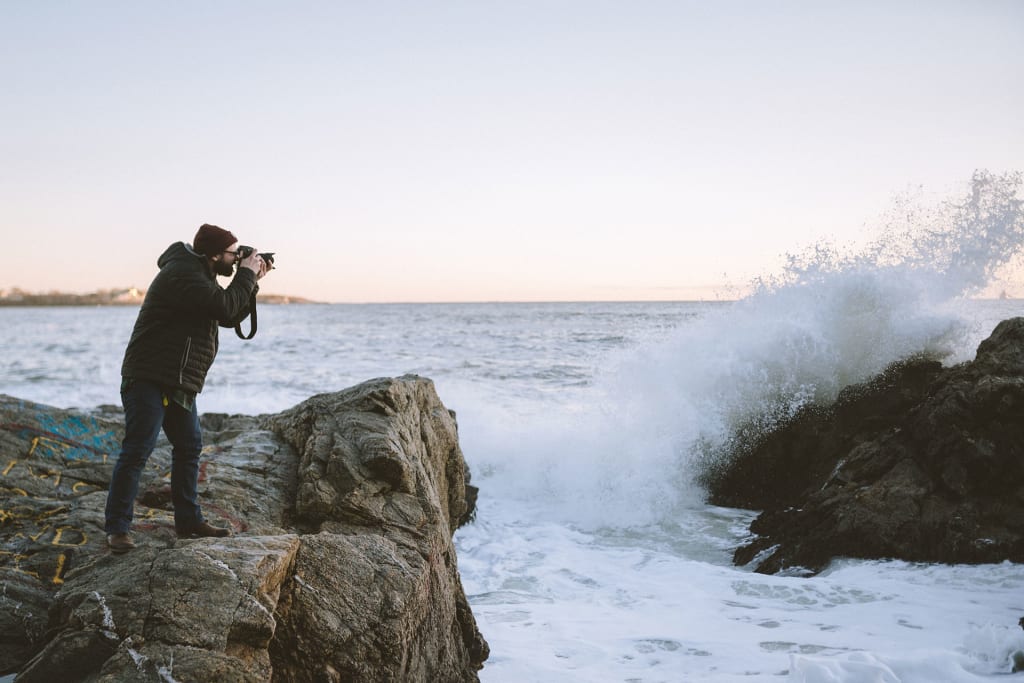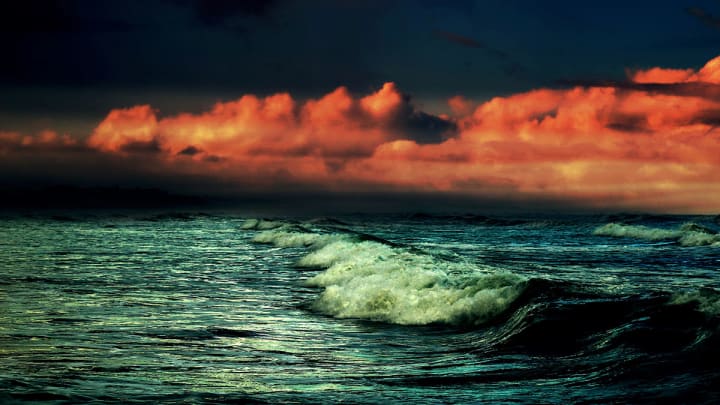How To Photograph Seascapes
Want to capture the beauty of the sea in all its glory? Here's how to photograph seascapes without it coming off as cheesy.

When done poorly, a seascape looks like a really terrible tourist photo—or just looks like some bold lines drawn on paper. When done the right way, a seascape can turn the world into a magical playground of Poseidon.
The things that divide a good seascape from a bad may seem subtle to the untrained eye, they're really not. Learning how to photograph seascapes without it looking like a 1980s Hawaii pamphlet isn't easy, but trust us, it's well worth it.
Here's how to capture the beauty of the open sea without making the classic mistakes newbies make.
First, wait for the right time.

It may be very tempting to try to eke out a photoshoot in the middle of the day, but don't do it. This is often the worst time to get a shot, simply because the light from the sun will wash out colors pretty badly. It also makes light reflections on the sea look somewhat strange.
Seascape photography is best done at dawn or at dusk, when the light from the sky remains colorful and casts beautiful multicolored reflections on the sea.
If you do try to do seascapes during the day, make a point of adding more color and action to your shots. This helps bring out some "pop" when the light itself might not.
Control the waves.

The biggest reason learning how to photograph seascapes is so hard is because of the waves. They are unpredictable and tend to be difficult to match the mood of the photo you're creating.
Did you know that you can control the look of the waves hitting the beach with your camera? If you choose a very slow shutter speed with a neutral density filter, the waves will look more like placid stillness than actual waves.
A 10-stop filter will give you a very serene look. Faster shutter speeds, on the other hand, add action and capture the wave mid-strike. This guide on how to control waves in seascape photography will help you learn the basics.
Seek out landscapes that have more than just sand and surf.

Having just sand and surf can make for a good photo, but the truth is that it becomes really monotonous. You won't really be able to show that you know how to photograph seascapes until you have a little more to the photo than a typical person would.
In many cases, the best photos tend to have a focal point. Whether it's the sun on the middle of the ocean, a cliff that overlooks the beach, or even just a lone palm tree, you should look for places that allow you to have something that pulls the eye into the photo.
A wide-angle lens is great for capturing moodier days at the beach.

Wide-angle lenses are perfect for catching shots of the ocean mist rolling on the sea, or really, just about any high-emotion shot you could take. That's why they're great for flattering landscape photography as well as good portrait shots.
A wide-angle lens is a good way to get great shots at any point. That's why most travel photographers suggest getting one.
If you want to get more impressive cloud lines, extend your exposure time.

Long exposure shots are often the key to learning how to photograph seascapes like a pro. A longer exposure time allows a lot of the "noise" of photographs to be smoothed out, while the "lines" and overall trends of light tend to be brought to the forefront.
This makes longer exposure times ideal for people who want to photograph striking, cloudy skies over seas.
Shooting in the morning will often land a reddish hue to your shots.

You know how some beach shots just seem to have that golden-red hue that makes the world look like it's on fire? That surreal effect is because of the way that the morning sun shines on the beach.
You don't need to know how to photograph seascapes or get a crash course in Photoshop hacks to get that glow in your shots. Just show up at the crack of dawn at the beach and start snapping away.
Play with the water's ability to reflect things.

The reflection from the sea's water can do amazing things for staging a good shot. If you have a particularly still ocean, or if you are able to get to a place where the water and light play in a particularly reflective way, it'll turn out great.
The trick here is to get shots at a fast shutter speed, or at a very slow shutter speed. This way, you can get the reflection mid-action or get a more still-life feeling to your photo.
Try to find an area where there aren't too many people around—unless you are trying to get the "touristy" vibe in your shot.

Part of learning how to photograph seascapes worthy of a magazine is learning to avoid the "busyness" of regular life. This means that you want as few people in your shots as possible, unless they are adding to the shot in a meaningful way.
Secluded beaches are a good place to go but you don't need to go to the most remote beach in the world to get your favorite shots. If you want to get really nice shots, consider going off-hours so that you avoid the crowds of the summer.
Be aware of the beach's hazards.

Though this is a guide on how to photograph seascapes, it's important to point out that the beach is kind of dangerous—both for you and your camera. If you crawl on top of a rocky outcropping when the tide comes in, you might end up falling and drowning. It's happened before.
Keep a close eye on the tide, the risks, and wear shoes that protect you from slipping and falling.
Additionally, it's worth pointing out that the sea spray can wreak havoc on cameras. Be very careful when handling your camera near the ocean, and please, bring some lens wipes just to make sure you're good to go.
Keeping aware of the humidity and the scenery is crucial if you want to have a successful trip. And, please, bring your beach essentials.
The easiest way to get a nice oceanic scene is to shoot a lighthouse.

The final part of learning how to photograph seascapes is figuring out how to reinforce the beachy vibe of a photo. The easiest way to apply that oceanic spin on the scenery is to add a lighthouse into the focus of the shot.
Lighthouses are pretty, ocean-focused, and at the same point, very welcoming. Shooting them is the easiest way to add a warm, architectural focal point to your beach shot without having to go too far out on the beach.
About the Creator
Sasha Konikovo
Born in the Ukraine and currently a citizen of New York City, Sasha Konikovo has become obsessed with makeup, fashion, and anything that keeps her svelte figure looking sharp. She hopes to marry a billionaire and have a lifestyle like Paris Hilton soon enough.






Comments
There are no comments for this story
Be the first to respond and start the conversation.